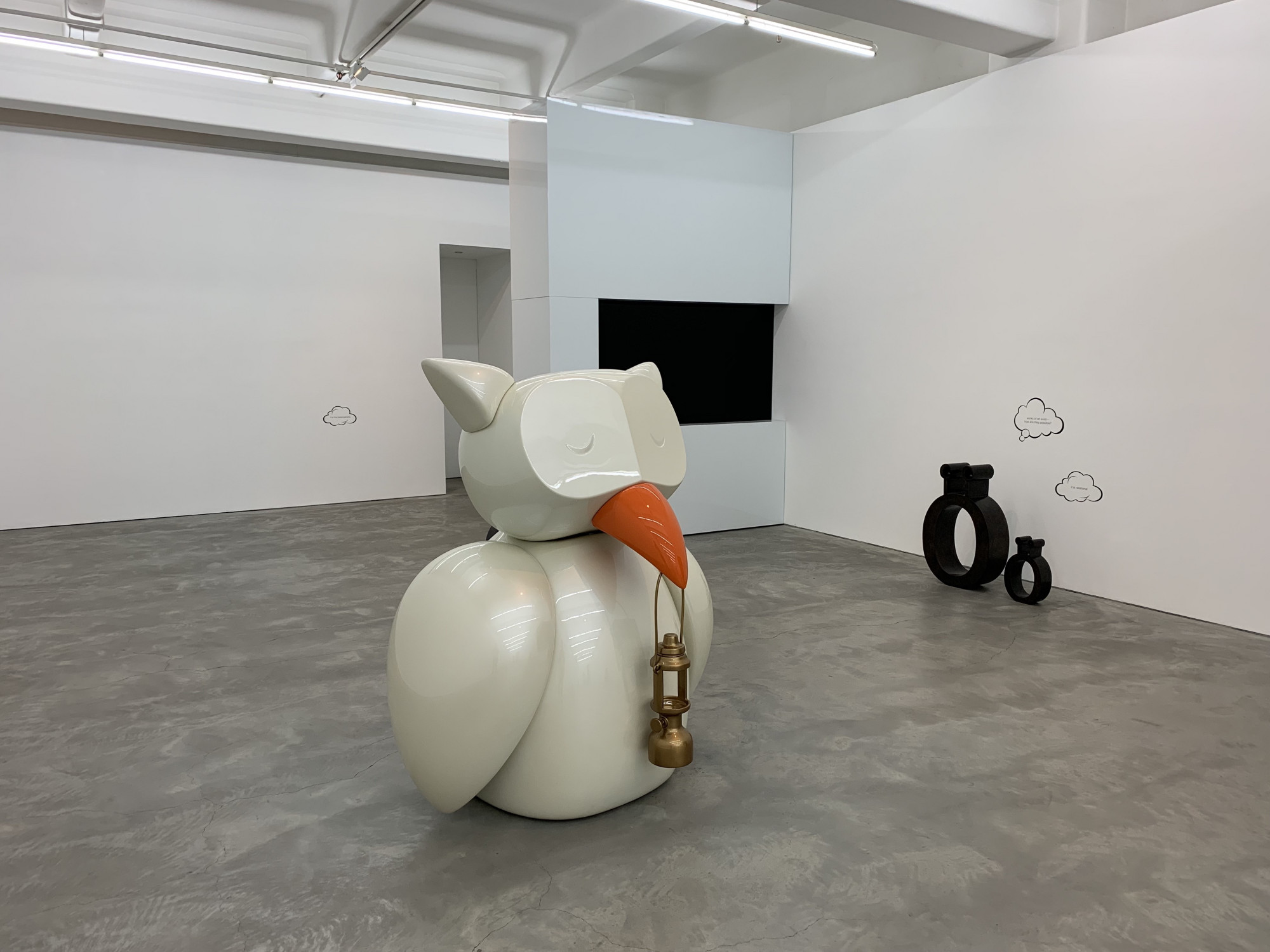
Emily Floyd: Anti-Totalitarian Vectors
⬤ Anna Schwartz Gallery 13 Jul - 17 Aug 2019
Totalitarian. Adjective. Relating to a system of government that is centralised and dictorial and requires complete subservence to the state. An exploration and dissection of such a powerful, driving term is shown through the meticulously crafted sculptural works of Emily Floyd all throughout Anti-Totalitarian Vectors, currently showing at the Anna Schwartz Gallery in the Melbourne CBD.
A playful aesthetic alongside excerpts from A Philosophy of History in Fragments, written by Hungarian philosopher Ágnes Heller, bounce off each other to depict a narrative surrounding the power of language and the juxtaposition of power that certain words contain. The excerpts themselves reflect upon these motifs, pondering various scenarios and landscapes (such as works of art exist – how are they possible?, and catastrophe is repetition and repetition is catastrophe) to the viewer, urging them to critically examine the, as Emily Floyd says herself, 'thingness' of language. Overall, the outcome is both philosophically striking and esoteric, with each portion of Heller's text playing a pivotal role in Floyd's collection.
This narrative, whilst ordered cohesively and quite clearly along the walls of the large exhibition space, can come off as quite cryptic when isolated from the sculptures scattered throughout the floor. Whether it be through the large, 150 cm tall cast aluminum Owl of Minerva sculpture in the middle of the space, or the smaller umlauts placed against the wall and around the floor, they expertly serve their purpose towards being the driving forces behind the theoretical concepts of the exhibition.
The sculptures themselves, however, provide separate physical properties. The owl is positioned to be peering directly at the viewer as he or she walks into the room, with its lantern being used to metaphorically guide him or her around the walls to walk amidst the umlauts, presenting arcane statements on language. The Owl of Minerva glistens in the lighting of the space to convey a glow off its shining white exterior, conveying an almost child-like feeling betwixt the matte, rustic umlauts surrounding it. The latter extremely small sculptures are used to deliver the sections of Heller's text to the viewer. Floyd's approach towards having literal letters with a more foreign approach points towards variety of language, conveying a sense of foreignness through the space. It was a well-made choice to hammer home how important the notion of language is, no matter where you are in the world.

Issue No. 1
Grab a copy of Memo’s first glossy annual magazine issue, featuring an extended artist focus on Archie Moore, the 2024 Venice Biennale Australian Representative, with essays by Rex Butler, Tara Heffernan, Tristen Harwood, and Hilary Thurlow.
Issue 1 features articles by Audrey Schmidt, Philip Brophy, Helen Hughes, The Manhattan Art Review’s Sean Tatol, Cameron Hurst, Chelsea Hopper, among your favourite regular Memo contributors. There are reviews and articles, including on Melbourne design art, French literature’s ageing enfant terrible, Michel Houellebecq, Derek Jarman’s Blue (1993), the celebrated Spike magazine cultural critic, Dean Kissick, the local cult-favourite Jas H. Duke, and much, much more.
Memo Magazine, 256 pages, 16 x 25 cm
By presenting her sculptures within textual ideas surrounding the authority of language, Floyd crafts an extremely intimate library of concepts which may seem disfigured at first glance. Yet it is strung together through a strong chronicle, which elevates Anti-Totalitarian Vectors both aesthetically and conjecturally to cement Emily Floyd as one of the most exciting contemporary artists working today.